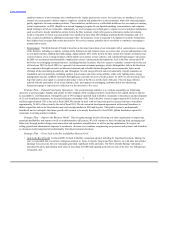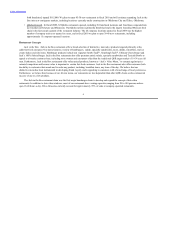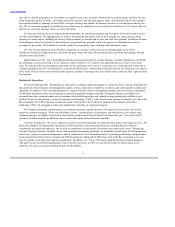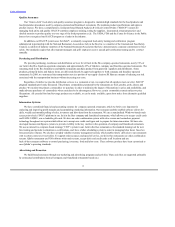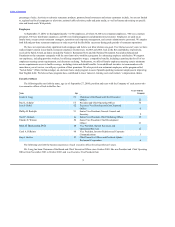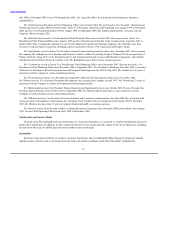Jack In The Box 2009 Annual Report Download - page 14
Download and view the complete annual report
Please find page 14 of the 2009 Jack In The Box annual report below. You can navigate through the pages in the report by either clicking on the pages listed below, or by using the keyword search tool below to find specific information within the annual report.
Table of Contents
supplies. Our deliveries of supplies may be affected by adverse weather conditions, natural disasters, supplier financial or solvency
issues, product recalls, failure to meet our high standards for quality or other issues.
Risks Associated with Development. We intend to grow by developing additional company-owned restaurants and through new
restaurant development by franchisees. Development involves substantial risks, including the risk of (i) the availability of financing for
the Company and for franchisees at acceptable rates and terms, (ii) development costs exceeding budgeted or contracted amounts,
(iii) delays in completion of construction, (iv) the inability to identify, or the unavailability of suitable sites on acceptable leasing or
purchase terms, (v) developed properties not achieving desired revenue or cash flow levels once opened, (vi) the unpredicted negative
impact of a new restaurant upon sales at nearby existing restaurants, (vii) competition for suitable development sites; (viii) incurring
substantial unrecoverable costs in the event a development project is abandoned prior to completion, (ix) the inability to obtain all required
governmental permits, including, in appropriate cases, liquor licenses; (x) changes in governmental rules, regulations, and interpretations
(including interpretations of the requirements of the Americans with Disabilities Act), and (xi) general economic and business conditions.
Although we manage our development activities to reduce such risks, we cannot assure you that present or future development will
perform in accordance with our expectations. Our inability to expand in accordance with our plans or to manage our growth could have a
material adverse effect on our results of operations and financial condition.
Reliance on Certain Geographic Markets. Because approximately 60% of our restaurants are located in the states of California
and Texas, the economic conditions, state and local laws, government regulations, weather conditions and natural disasters affecting
those states may have a material impact upon our results.
Risks Related to Entering New Markets. Our growth strategy includes opening restaurants in markets where we have no existing
locations. We cannot assure you that we will be able to successfully expand or acquire critical market presence for our brands in new
geographical markets, as we may encounter well-established competitors with substantially greater financial resources. We may be unable
to find attractive locations, acquire name recognition, successfully market our products or attract new customers. Competitive
circumstances and consumer characteristics in new market segments and new geographical markets may differ substantially from those
in the market segments and geographical markets in which we have substantial experience. It may also be difficult for us to recruit and
retain qualified personnel to manage restaurants. We cannot assure that company or franchised restaurants can be operated profitably in
new geographical markets. Management decisions to curtail or cease investment in certain locations or markets may result in impairment
charges.
Competition. The restaurant industry is highly competitive with respect to price, service, location, personnel, advertising, brand
identification and the type and quality of foodand there are many well-established competitors. Each of our restaurants competes directly
and indirectly with a large number of national and regional restaurant chains, as well as with locally-owned and/or independent quick-
service restaurants, fast-casual restaurants, sandwich shops and similar types of businesses. The trend toward convergence in grocery,
deli and restaurant services may increase the number of our competitors. Such increased competition could decrease the demand for our
products and negatively affect our sales and profitability. Some of our competitors have substantially greater financial, marketing,
operating and other resources than we have, which may give them a competitive advantage. Certain of our competitors have introduced a
variety of new products and engaged in substantial price discounting in the past and may adopt similar strategies in the future. Our
promotional strategies or other actions during unfavorable competitive conditions may adversely affect our margins. We plan to take
various steps in connection with our on-going “brand re-invention” strategy, including making improvements to the facility image at our
restaurants, introducing new, higher-quality products, discontinuing certain menu items, and implementing new service and training
initiatives. However, there can be no assurance (i) that our facility improvements will foster increases in sales and yield the desired return
on investment, (ii) of the success of our new products, initiatives or our overall strategies or (iii) that competitive product offerings,
pricing and promotions will not have an adverse effect upon our sales results and financial condition. We have an on-going “profit
improvement program” which seeks to improve efficiencies and lower costs in all aspects of operations. Although we have been
successful in improving efficiencies and reducing costs in the past, there is no assurance that we will be able to continue to do so in the
future.
13


